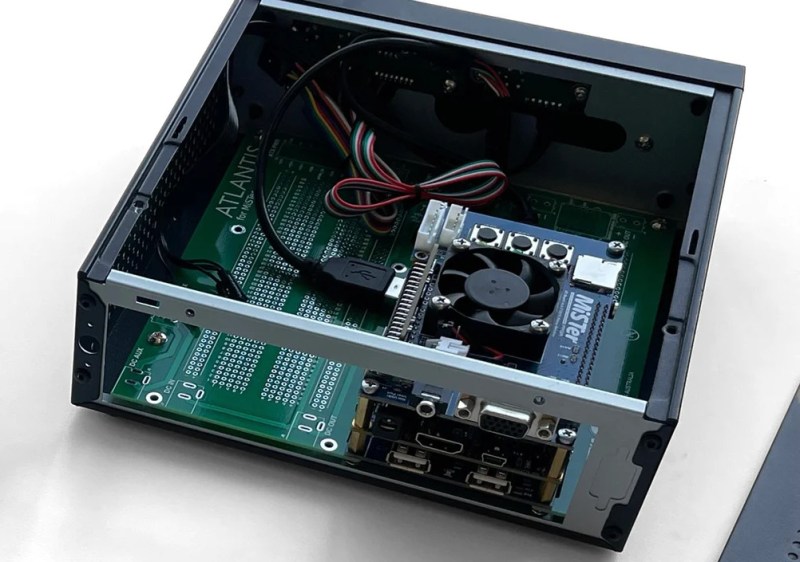Playing classic games, whether they are games from the golden age of arcades or simply games from consoles that are long out of production, tends to exist on a spectrum. At one end is grabbing a game’s ROM file, finding an emulator, and kludging together some controls on a keyboard and mouse with your average PC. At the other is meticulously restoring classic hardware for the “true” feel of what the game would have felt like when it was new. Towards the latter end is emulating the hardware with an FPGA which the open-source MiSTer project attempts to do. This build, though, adds ATX capabilities for the retrocomputing platform.
The ATX standard was developed as a way to standardize motherboard mounting points in PC cases. This one uses the Mini-ITX version, allowing the MiSTer FPGA board to mount to a PCB which fits into a Mini-ITX case. All of the ports on the board appear where the I/O would normally be if this was a standard motherboard, but filling the otherwise empty space with blank PCB is where this project really shines. This allows the seamless addition of breadboards, other single-board computers like the Raspberry Pi, or any other headers or custom circuitry to be directly included.
What you’ll end up with is an open-source PC with plenty of room for expansion that fits into a standard PC case, which could go a long way to recreating older PC games and their original feel with the FPGA programmed to act as original hardware. We like this as a platform for retro gaming almost as much as this authentic and brand-new 486 PC used for similar purposes.
Thanks to [Shane] for the tip!















they need atx backplates now!
From the initial picture in my RSS reader, I thought that this was using an ATX *power supply* as a case.
In my experience, the Raspberry Pi is an anemic excuse for a computer that chokes on anything more taxing than Libre Office. Gaming? HA! This thing nearly starts smoking while trying to play Youtube videos! DISCLAIMER: my experience is with version 3 WiFi and below.
Where it really shines is embedded headless applications (like a NAS, home security camera, or Octopi 3d printer driver, which is what I use it for) and **taking up very little space while doing so. **
This ATX case nonsense removes one of the few benefits the Pi has above more capable computing platforms. Imagine opening the hood of a pickup truck and finding a Briggs and Stratton lawnmower engine! No wonder it dies every time I try to drive up a hill!
This isn’t a raspberry pi. It’s an FPGA project used specifically for retro gaming and retro computing.
Some of the beefier FPGA chips have dev boards that are also hefty (Digilent, Terasic).
While some of that is switches and displays, a good design could fit inside a mini ITX case. Lights and switches could be accessed by removing a side panel: glass doors on one side are already a common feature.
Maybe this is a feature Digilent / Terasic / whoever could add to their product line.